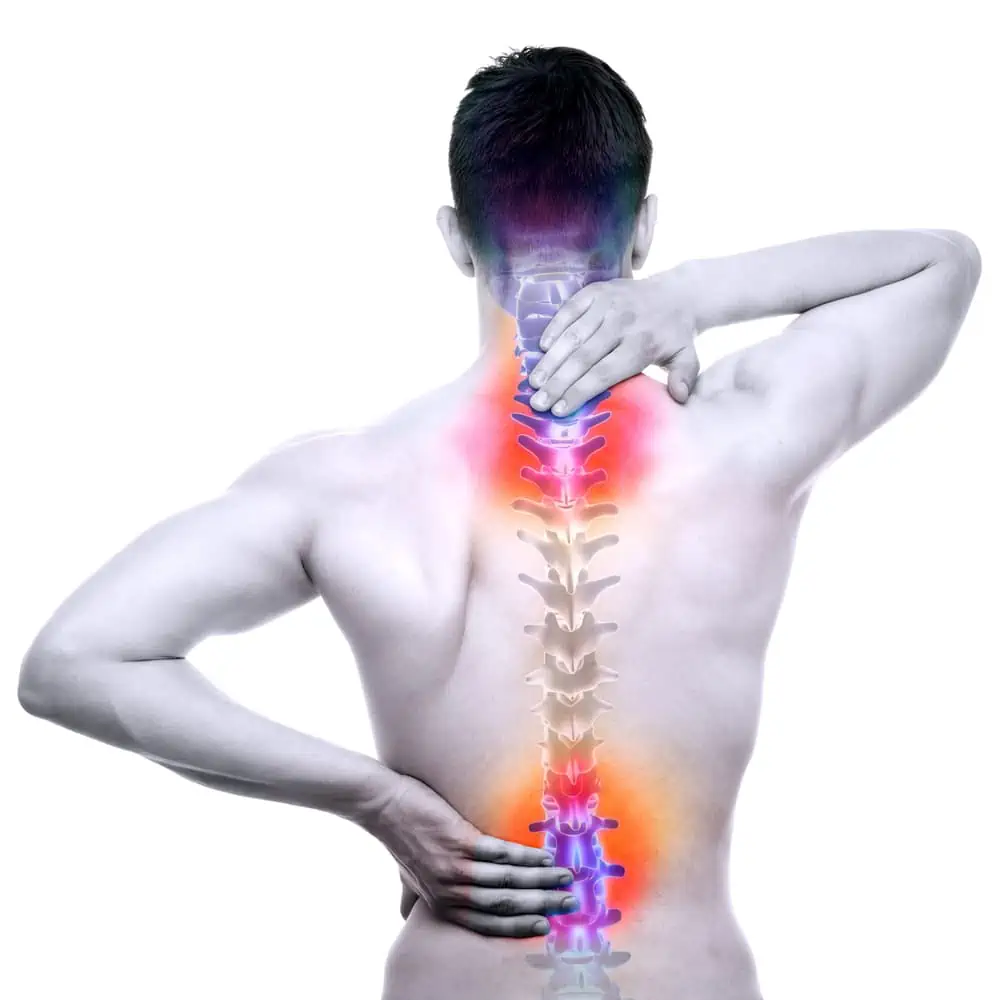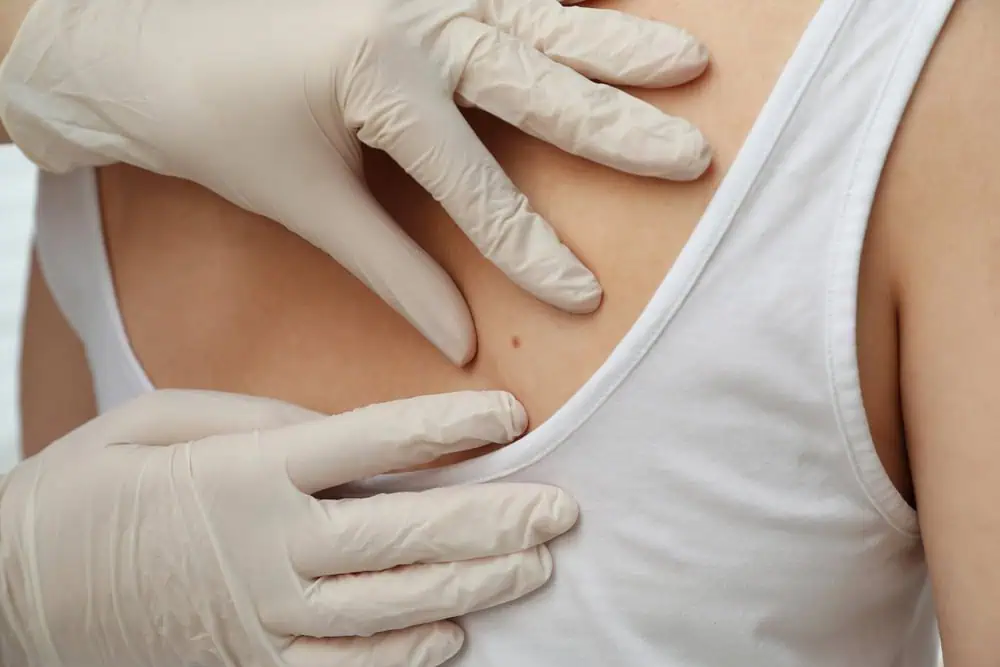Using Collagen for menopause joint pain, has been proven to add huge benefits and relief when going through the menopause. Collagen is the most abundant protein in our bodies, it plays an integral role in maintaining the integrity of our skin, bones, and joints. As we age, however, the natural production of collagen decreases, which can lead to a variety of age-related issues, including joint pain. Joint discomfort is a common symptom during menopause, marked by a significant drop in estrogen levels that can exacerbate inflammation and the wear and tear of joint tissues.

I understand that women going through menopause often experience increased joint pain, which can impact their quality of life. Diet and nutrition play a pivotal role in joint health, and incorporating the right nutrients can support joint function and mitigate discomfort. Collagen supplements have gained popularity as a means to boost natural collagen levels and may have a positive effect on maintaining joint flexibility and mitigating the pain associated with menopausal changes. However, the efficacy of these supplements can vary based on the individual and the quality of the product.
Key Takeaways
- Collagen is crucial for maintaining healthy joints, and its production decreases with age, especially during menopause.
- Menopausal joint pain can significantly affect life quality, but dietary changes and collagen supplementation may provide relief.
- Ensuring a balanced diet, alongside considering collagen supplements, can help in managing menopause-related joint pain.
Understanding Collagen and Menopause
In this section, I focus on how collagen is intricately linked with menopausal changes, impacting bones, joints, and skin due to shifts in hormone levels.
What is Collagen?
Collagen is a protein that serves as a key building block for my body’s tissues, including skin, bones, muscles, and, importantly, connective tissue. It’s vital for maintaining skin elasticity and joint health. There are several types of collagen; Type I and III are predominantly responsible for skin structure, whereas Type II is crucial for cartilage.
Collagen’s Role in Menopause
As I age, my estrogen levels decline, especially during menopause, leading to a decrease in collagen production. This change affects the tissues in my bones and joints, possibly leading to joint pain. Supplementing with collagen peptides may be beneficial, as it’s suggested that they can support joint health and alleviate some of the discomfort associated with menopause. Collagen supplements have become a popular choice for individuals seeking to address the effects of decreased oestrogen on the body’s collagen levels.
Joint Pain During Menopause
As a woman progresses through menopause, joint pain can become a prevalent issue, often due to hormonal changes that affect joint health.
Common Symptoms of Joint Pain
Joint pain during menopause may manifest itself in various ways. I might experience discomfort that ranges from dull aches to sharp pains. Typically, this pain is accompanied by stiffness and inflammation, which can exacerbate the sensation of discomfort. It’s common for the pain to occur in different parts of my body, such as the hands, knees, hips, and spine. The intensity of joint pain can impact my daily activities, making it more difficult to complete tasks that were once easy.
- Dull ache
- Sharp pain
- Stiffness
- Inflammation
Impact of Estrogen on Joints
Estrogen plays a significant role in maintaining joint health. Its decrease during menopause can lead to an increase in joint pain and conditions like arthritis or osteoarthritis. This hormone helps to reduce inflammation and pain, but as its levels drop, my joints might lose some of their flexibility, resulting in a diminished ability to cushion and protect my bones. This hormonal change can also influence the rate at which my body repairs cartilage, which is crucial for smooth joint function.
- Inflammation control
- Joint flexibility
- Cartilage repair
Understanding these aspects can help me address joint pain during menopause effectively, improving my overall quality of life.
Diet and Nutrition for Joint Health
Maintaining joint health during menopause can be achieved with the right nutrition, focusing on foods that aid collagen synthesis and provide essential nutrients.
Essential Nutrients for Collagen Synthesis
Collagen synthesis, the process of building new collagen, hinges on specific nutrients. Vitamin C is vital as it serves as a co-factor for enzymes involved in the synthesis of collagen. Without adequate Vitamin C, collagen production can be significantly impaired.
Foods high in Vitamin C:
- Citrus fruits (oranges, lemons)
- Strawberries
- Bell peppers
- Broccoli
Another key component for collagen synthesis is protein, which supplies amino acids, the building blocks of collagen.
Protein-rich foods:
- Chicken
- Fish
- Beans
- Bone broth, which also provides collagen and other nutrients beneficial for joint health.
Adequate mineral intake, particularly calcium, is essential for bones and connective tissues that support joints.
Best Foods for Healthy Joints
Diet plays a crucial role in supporting the health of your joints. Omega-3 fatty acids, known for their anti-inflammatory properties, are particularly beneficial. Salmon is an excellent source of these fats, which may help reduce joint pain associated with menopausal changes.
- Salmon
- Walnuts
- Chia seeds
Additionally, fruits and vegetables are not only rich in vitamins but also contain antioxidants that can help protect joints from oxidative stress.
Vegetables and fruits abundant in antioxidants:
- Leafy greens like spinach and kale
- Berries such as blueberries and raspberries
Incorporating beans into the diet provides both protein and fiber, supporting gut health, which is closely linked to overall inflammation levels in the body.
A well-rounded diet that encourages collagen production and supports bone and joint health is crucial for managing menopausal joint discomfort. Strive for a balanced intake of vitamins, minerals, and macro-nutrients to maintain joint function and overall health.
Collagen Supplements and Their Efficacy
In my investigation of collagen supplements for menopause-related joint pain, I’ve discovered both the importance of selecting a high-quality product and the potential benefits they offer for connective tissue health.
Choosing the Right Collagen Supplement
When it comes to selecting a collagen supplement, I look for hydrolyzed collagen which is easier for the body to absorb. This is essential because the smaller peptides from hydrolyzed collagen can be readily utilized in the body, contributing to their effectiveness. Among the variety of collagen supplements, those featuring a blend of collagen types, particularly Type 2 for joint health, catch my attention. The amino acid profile is another key aspect I examine, ensuring a rich composition that benefits not just the joints but also skin, hair, and nails.
Benefits of Collagen Peptides
My research points to the benefits of collagen peptides in supporting joint health, especially during menopause when women experience a natural decline in collagen production. By supplementing with collagen peptides, I’ve learned one can help maintain the integrity of cartilage, which is crucial for joint function. Evidence suggests that regular intake of collagen supplements can contribute to improved bone density and muscle strength, factors which are vital for overall tendon and joint health. Regular consumption of these supplements may contribute to recovery and strengthening of the extracellular matrix of connective tissues, thereby enhancing structure and load-bearing capabilities.
Lifestyle Changes and Remedies

In managing joint pain during menopause, I’ve found that lifestyle adjustments often play a pivotal role. Simple, daily actions can significantly impact discomfort levels and overall joint health.
Exercise and Joint Mobility
Regular exercise is vital for weight management, which can ease the strain on joints. I ensure my routine includes both aerobic exercises for cardiovascular health and strength training to support the muscles around my joints. Additionally, I incorporate flexibility and mobility exercises. Specific movements that take joints through their full ranges of motion help maintain flexibility and reduce stiffness.
- Aerobic Exercise: Aim for at least 150 minutes of moderate-intensity aerobic activity each week.
- Strength Training: Engage in muscle-strengthening activities at least two days per week.
- Flexibility and Mobility: Daily stretches or yoga can improve joint function.
Natural Remedies for Menopause Joint Pain
I am mindful of incorporating natural remedies into my regimen to support joint health. Ensuring adequate hydration is a simple yet effective practice — I drink plenty of water throughout the day. A diet rich in anti-inflammatory foods, such as those containing omega-3 fatty acids, is beneficial for reducing joint inflammation. I regularly consume healthy fats from sources like avocados and incorporate turmeric, known for its anti-inflammatory properties, into my meals.
- Hydration: I drink a minimum of 8 glasses of water daily to keep my joints lubricated.
- Nutrition:
- Omega-3 Fatty Acids: Include foods like salmon, flaxseeds, and walnuts.
- Curcumin in Turmeric: Add turmeric to dishes or take supplements as appropriate.
It’s important for me to prioritize sleep and manage stress, both of which can exacerbate joint pain if not properly regulated.
Addressing Joint Pain with Medical Interventions

Medical interventions for joint pain during menopause are vital. They address hormone changes and can mitigate discomfort caused by conditions like osteoarthritis or osteoporosis. Let’s explore two main streams of intervention: Hormone Replacement Therapy (HRT) and physical therapy.
Hormone Replacement Therapy
During perimenopause and after menopause, I’ve observed that lower estrogen levels are often linked with an increase in joint pain for many women. HRT aims to alleviate this pain by boosting hormone levels, potentially reducing inflammation and discomfort associated with conditions like osteoarthritis. While considering HRT, it’s important for me to also consider the potential risks, such as an increased risk of certain cancers, and to discuss these with my healthcare provider.
Physical Therapy and Rehabilitation
Injuries and chronic conditions like osteoporosis often contribute to joint pain. Physical therapy and rehabilitation play a crucial role in managing these issues. For me, a tailored physical therapy program would involve exercises that focus on strengthening muscles around the joints, improving flexibility, and providing pain relief. Rehabilitation efforts are especially valuable for postmenopausal women to maintain mobility and enhance joint function.
Understanding Associated Menopause Symptoms
During menopause, I notice several changes in my body due to hormonal fluctuations. Specifically, these changes prominently affect my skin, hair, bones, and muscles, which can be concerning.
Impact on Skin and Hair Health
I understand that my skin loses much of its elasticity and may appear less plump and vibrant due to a decline in Type 1 collagen, which is crucial for maintaining skin’s structural integrity. Collagen for menopause is important because its decrease leads to the formation of wrinkles and lines. Furthermore, my hair could potentially become thinner and more brittle during this phase, contributing to an aged appearance.
Changes in Bone and Muscle Strength
Menopause can also negatively influence my bone health due to a drop in estrogen levels, enhancing the risk of osteoporosis. My bones might lose density, becoming more fragile over time. As for muscle strength, it may diminish during menopause, often leading to joint pain and potentially affecting my overall mobility and weight management. It’s key for me to focus on nutrition and exercise to support both bone and muscle health through this transition.
Nutritional Support for Connective Tissues
In my exploration of nutritional approaches to support connective tissues, particularly for those undergoing menopause, I’ve identified key nutrients that play pivotal roles in the maintenance and repair of joints, bones, and skin.
Role of Vitamins and Minerals
Vitamin C is essential for synthesizing collagen, the protein that gives structure to my connective tissues. A diet rich in vitamin C can aid in maintaining the integrity and function of joints and skin. I make sure to include sources of vitamin C, such as citrus fruits and leafy greens, in my diet.
Zinc and copper are trace minerals that serve as cofactors in collagen synthesis and connective tissue repair. Oysters and pumpkin seeds are excellent sources of zinc, while nuts like cashews offer a healthy dose of copper. Keeping sufficient levels of these minerals is crucial for my joint health.
Magnesium plays a role in over 300 enzymatic processes, including those necessary for protein synthesis and muscular function. It’s important for maintaining bone density too. I often turn to magnesium-rich foods like spinach and whole grains.
Finally, Vitamin D is paramount for calcium absorption—a vital mineral for bone health. Sun exposure and foods fortified with Vitamin D help support my bones, potentially preventing age-related degradation.
Fatty Acids and Joint Health
For joint health, omega-3 fatty acids in fatty fish like salmon and sardines have been beneficial. These fatty acids are anti-inflammatory, which may reduce joint pain and stiffness associated with menopause. I include these fish in my diet regularly, aiming for at least two servings per week.
Consuming omega-3s from plant sources like flaxseeds ensures I have a well-rounded approach to combating inflammation. Additionally, regular exercise supports joint flexibility and function while potentially easing discomfort in my joints.
By focusing on these nutrients and incorporating them into my daily routine, I’m actively supporting my joint health, skin elasticity, and overall bone density.
Preventative Measures for Long-Term Joint Health
As we age, joint health becomes increasingly important and managing inflammation is key. Through strategic dietary choices and an active lifestyle, I aim to support my collagen production and enhance my mobility, potentially reducing pain and stiffness in my joints.
Strategies to Reduce Inflammation
I focus on consuming a diet rich in anti-inflammatory foods to help reduce inflammation in my joints. Key components include:
- Omega-3 fatty acids: I regularly eat fatty fish like salmon or take fish oil supplements.
- Antioxidants: Foods high in antioxidants like berries, dark leafy greens, and nuts are staples in my meals.
- Vitamin C: This nutrient, found in citrus fruits, bell peppers, and strawberries, is vital for collagen synthesis and joint health.
- Hydration: Adequate water intake is essential for joint lubrication and reducing stiffness.
By incorporating these nutrients into my diet, I take proactive steps to manage inflammation and support my overall joint health.
Maintaining Active Lifestyle Choices
To maintain my joint mobility and health:
- Exercise: I engage in a mix of activities that promote joint health without excessive strain, such as swimming, cycling, and yoga.
- Strength training: Building muscle around the joints helps stabilize and protect them.
- Flexibility and balance exercises: Daily routines to improve my range of motion and reduce the risk of falls are crucial for me.
- Stress management: Activities like meditation and deep breathing contribute to reduced inflammation.
Each of these practices is a key part of my comprehensive approach to safeguarding my long-term joint health.
The Science of Aging and Joint Degeneration
As we age, our bodies undergo a myriad of changes, including a decline in collagen production and alterations in bone health that markedly affect our joints. During menopause, these changes can become even more pronounced, leading to discomfort and conditions such as osteoarthritis.
Effects of Aging on Collagen Production
My body’s ability to synthesize collagen diminishes with age, impacting the integrity of connective tissues that are essential for healthy joints. Collagen, a crucial protein, provides elasticity and strength to my tissues, but as I age, the reduced production can lead to stiffer and less pliable joints. Bone health is closely tied to collagen levels, since collagen gives bones resilience. When less collagen is present, my bones could become more brittle and susceptible to fractures.
Correlation Between Menopause and Osteoarthritis
Menopause marks a period in my life when estrogen levels drop significantly, which can have a direct effect on joint health. Estrogen is known to have a protective effect on connective tissue, and with its decline, there is an observed increase in joint pain and the risk of developing osteoarthritis—a degenerative joint disease characterized by the deterioration of cartilage. Indeed, studies like Gene-expression changes in knee-joint tissues with aging and menopause have found that the hormonal changes I experience during menopause may exacerbate joint degeneration, leading to increased discomfort and reduced joint functionality.
Frequently Asked Questions
Understanding the benefits of collagen supplements for menopause-related joint pain can help make informed decisions about managing symptoms effectively.
What are the top collagen supplements recommended for relieving joint pain during menopause?
I find that Type I collagen is commonly suggested for menopausal women because it’s found in areas of the body such as skin, bones, and tendons, helping to improve skin elasticity, bone density, and joint health. The Top 12 Best Collagen Supplements for Menopause list can serve as a good starting point for choosing a product.
How does collagen supplementation compare to glucosamine in the treatment of arthritis?
Collagen supplementation supports the body’s joint and bone health from within by providing the necessary proteins. In contrast, glucosamine helps to rebuild cartilage and restore joint health. Both can be beneficial, but collagen directly supplies the protein building blocks.
What dosage of collagen is advisable for women going through menopause to alleviate joint discomfort?
The advisable dosage for collagen supplementation can vary, but a common recommendation is to start with a daily dose of approximately 5 grams. It’s best to consult a healthcare professional to tailor the dosage to individual needs.
Can collagen intake improve knee cartilage repair, and if so, which type is most effective?
Yes, collagen intake can improve knee cartilage repair, with Type II collagen being most effective for joint-related issues, as it is primarily found in cartilage. However, all types of collagen can contribute to overall joint health.
Are there specific benefits of Type 1 collagen for menopausal joint issues?
Certainly, Type 1 collagen promotes skin, hair, and bone health, which is crucial since these areas are affected during menopause, leading to an improvement in symptoms like joint discomfort.
Aside from collagen, which supplements should be considered for reducing joint pain associated with menopause?
In addition to collagen, other supplements like omega-3 fatty acids, vitamin D, and calcium are often recommended to help reduce inflammatory responses and support joint and bone health during menopause.













